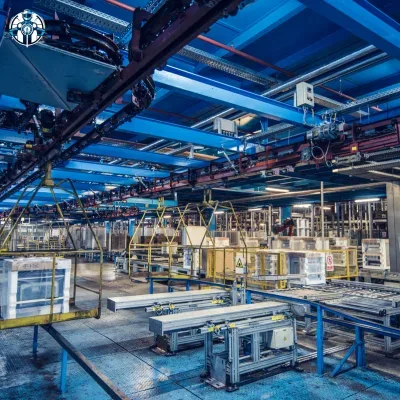Key Points
- Research suggests Google’s Sycamore experiment in 2019 showed quantum supremacy, where a quantum computer solved a problem in 200 seconds that might take classical supercomputers 10,000 years, though this is debated.
- The experiment involved random circuit sampling, a task hard for classical computers due to quantum mechanics like superposition and entanglement.
- There’s controversy, as IBM and others claim classical computers could do it in days, not years, highlighting ongoing debates in quantum computing.
Introduction
Technology has an important fundamental concept known as quantum supremacy. It means that a quantum computer can perform some computations that a common computer can never execute swiftly. According to their statement in 2019, Google stated that their own Sycamore processor had achieved such a capability.
One computation took 200 seconds, which would have been unsolvable for a supercomputer in 10,000 years. In this article, we’ll discuss quantum supremacy, how the Sycamore experiment worked, and why it matters. It also acknowledges some contradictions in the area as well.
Explore more: What is Quantum Computing? A Complete Guide (2025)
What Was the Sycamore Experiment?
Quantum supremacy is the concept where a quantum computer is capable of solving a problem that classical computers cannot solve within appreciable time. Quantum computing is a rising field that was named by the physicist John Preskill in 2012. It came into the limelight when last year, Google announced it in the journal “Nature”. Their Sycamore processor, which has 53 qubits in total, solved a task in 200 seconds. Google claimed that if Summit – one of the world’s most powerful supercomputers – had to perform the same task, it would take it a whopping 10,000 years.

The idea comes from Richard Feynman’s proposal in the 1980s. He stated that quantum systems actualize a number of problems pertinent to physics and chemistry. This is the case because classical simulation quickly skyrockets when the quantum system has many particles.
The main problem is to have a sufficient number of qubits and a low rate of errors to achieve the task much faster. Scientists also always have to identify tasks that are difficult for classical computers, yet, are quite simple for quantum computers.
Explore more: How Does Quantum Cryptography Impact Cybersecurity?
Controversies and Counter-Claims
This idea of quantum supremacy caused a certain amount of concern. A leading contributor to the field of quantum computing, IBM, was not left behind on the topic of quantum supremacy and actually wrote a blog on the topic “quantum supremacy.” Such critics claimed it would be possible to achieve a perfect simulation on a classical system in 2.5 days only.
It does not align with the proposal made by Google in regard to the project requiring a 10,000-year lifespan. Google’s key argument was not thorough with respect to what classical computers are capable of, particularly in addressing supercomputer memory and algorithms, retorted IBM.

In the year 2022, J.C Science was produced by researchers from the Chinese Academy of Science. By using a cluster of 512 Graphics Processing Units (GPUs), they were able to simulate the task in a few hours only. They have got better results in solving the problem by remembering it in terms of the 3D network.
That is why these counterclaims are coming up with the argument of quantum supremacy. Is it about the way that tasks take years while doing others, it took us only days? Perhaps it is that classical computers are unable to perform those tasks at all.
Slightly, this experiment in Sycamore has been one way but proved that more effective methods are needed to assess this progress. Sources like Wikipedia note IBM’s 2.5-day claim and the later simulations.
Explore more: How Quantum Computing is Revolutionizing Drug Discovery
Significance and Implications
Despite the debates, the Sycamore experiment holds significance for several reasons:
· Technological Milestone:
It proved that we can build a quantum computer with 53 qubits and low error rates. This allows it to do calculations that classical systems struggle with. This marks progress toward scalable quantum computing.
· Catalyzing Research:
The announcement sparked more investment and interest. Companies like Google and IBM, along with startups, pushed for progress. We see this in further studies, like chemical simulations on Sycamore.
· Benchmarking Needs:
The event highlighted the need for clear standards. Classical simulation techniques keep getting better, which could close the gap.
The experiment also hints at future uses, like drug discovery, solving optimization problems, and improving cryptography. However, realizing these possibilities, like Shor’s algorithm for factoring, requires fault-tolerant logical qubits. Researchers are focusing on this challenge.
Explore more: Can Shor’s Algorithm Break RSA? The Future of Encryption
Details of Google’s Sycamore Experiment

The Sycamore experiment, explained in the Nature paper, focused on random circuit sampling, a key test for quantum superiority. Here’s how it worked:
· Quantum Circuit Design:
Google built a quantum circuit using 53 qubits. They applied random quantum gates to change the qubits’ states, which created a complex quantum state.
· Sampling Process:
They ran the circuit many times. Each run measured the qubit states to create bitstrings. This sampling produced a set of outcome probabilities. They confirmed these results with classical simulations for smaller circuits.
· Performance Claim:
Sycamore finished sampling one instance of the circuit a million times in around 200 seconds. Google used the Summit supercomputer to simulate parts of the circuit. They estimated that a full simulation would take about 10,000 years.
The paper pointed out technical improvements, like quick, high-quality gates in a 2D qubit array. They also used cross-entropy benchmarking to check calibration. This method predicts system performance based on how well each component works. This marks the start of noisy intermediate-scale quantum (NISQ) technologies. These could help with random number generation, optimization, machine learning, and materials science.
Explore further: How Does AWS Support Quantum Computing?
Future of Quantum Computing
Quantum computing is still young, facing challenges like error correction and scalability. Decoherence and noise need better error correction methods. It’s also important to add more qubits without losing their coherence. Despite these hurdles, progress is quick. Major tech companies are investing a lot, and we expect to see more examples of quantum advantages in real applications soon.
Final Words
Google’s Sycamore experiment, though it sparked debates, is a big step in quantum computing. It shows that quantum supremacy is possible and sets the stage for major innovations across many fields.
FAQs
What is Google’s claim of quantum supremacy?
Google claims to have achieved quantum supremacy by performing a computation in 200 seconds on its Sycamore quantum processor that would take the fastest classical supercomputer approximately 10,000 years.
Which technology is used by Google Sycamore for quantum computing?
The Sycamore processor uses transmon superconducting qubits arranged in a two-dimensional grid, enabling high connectivity and efficient quantum operations.
What is the science behind quantum computing?
Quantum computing uses principles like superposition, entanglement, and quantum interference to process information using qubits, which can exist in multiple states simultaneously, unlike classical binary bits.
What did Google’s experiment with quantum computing demonstrate?
Google’s experiment demonstrated that its Sycamore processor could solve a specific computational problem exponentially faster than classical supercomputers, marking a significant milestone in quantum computing development.









